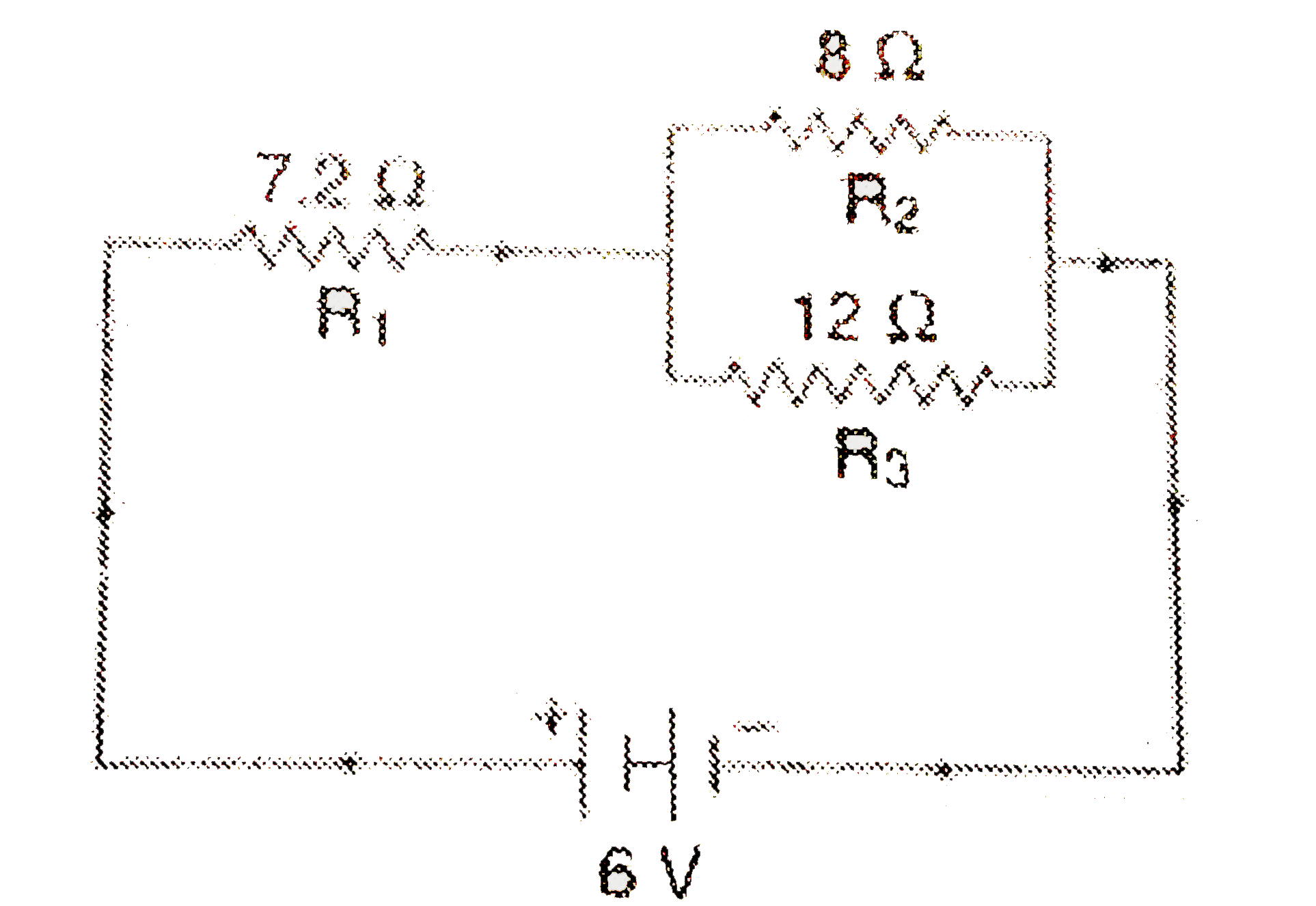(a) what is meant by series and parallel combination of resistances ?
(b) in which case, series combination or parallel combination, the combined resistance is less than any of the individual resistances ?
(c ) How should two resistance of 2Ω each be connected so as to produce an equivalent resistance of 1Ω ?
In the circuit diagram given here , find:
(i) total resistance of the circuit
(ii) total current flowing in the circuit, and
(iii) the potential difference across R1

Step by step video & image solution for (a) what is meant by series and parallel combination of resistances ? (b) in which case, series combination or parallel combination, the combined resistance is less than any of the individual resistances ? (c ) How should two resistance of 2 Omega each be connected so as to produce an equivalent resistance of 1 Omega ? In the circuit diagram given here , find: (i) total resistance of the circuit (ii) total current flowing in the circuit, and (iii) the potential difference across R_(1) by Physics experts to help you in doubts & scoring excellent marks in Class 10 exams.
Topper's Solved these Questions
Similar Questions
Why is resistance less in parallel combination of resistors ?
View SolutionExplain with diagrams what is meant by the "series combination" and "parallel combination" of resistances. In which case the resultant resistance is: (i) less, and (ii) more, than either of the individual resistances?
View Solution
Knowledge Check
- Question 1 - Select One
Three wires each have resistance 2Ω, if we connect 2 in series with one parallel to the combination the equivalent resistance is
A4/3ΩB3/4ΩC6ΩD3Ω - Question 2 - Select One
In the series combination of two or more than two resistances
Athe current through each resistance is sameBthe voltage through each resistance is sameCneither current nor voltage through each resistance is sameDboth current and voltage through each resistance are same - Question 3 - Select One
The total resistance in the parallel combination of three resistances 9Ω,7Ωand5Ω
A1.22ΩB2.29ΩC4.22ΩD2.02Ω
What is the ratio of equivalent resistance of series combination of n equal resistance to the equivalent resistance in parallel combination of these n resistances ?
View SolutionShow that equivalent resistance in parallel combination is always less than each of the individual resistances connected in the combination.
View Solution(a) Why does resistance increase in a series combination of resistors ?
(b) Why does resistance decrease in a parallel combination of resistors ?View SolutionGiven three resistors of resistances 1Ω,2Ωand3Ω. How will you combine them to get an equivalent resistance of 115Ω ?
View SolutionCombination of Resistance |Series and Parallel connection
View Solution
